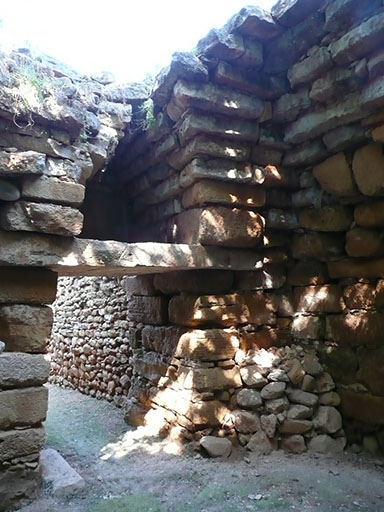Tholos Tomb
Minoan Burials. On Crete, Minoan burials were made in circular Tholos stone tombs, rectangular Ossuaries (bone depositories), and caves.
For many years it was thought that the Minoan Civilisation existed only in the east and central areas of Crete, but the Greek/Swedish excavations in Kanevaro Street in Hania, and the Tholos tombs at Maleme and in the village of Stylos, near Aptera, about 10km east of Hania, proves that the Minoans had a significant presence around, and to the west, of Hania.
The term 'Minoan' was introduced into the history of Crete by the British Archaeologist, Sir Arthur Evans, after the mythical King Minos. The Tholos tomb at Maleme belongs to the Late Minoan III Period ( c.1,450 - c.1,100 BC) or Late Bronze Age, also known as the 'Final Palace Period'.
In all these burials, provision was made for the placing of cult offerings, and the deceased were often buried with gold grave offerings. Questions remain as to whether or not these Tholos tombs were also the centre for human sacrifice.
The rough stone lined excavated entrance is known as a 'dromos', in this case, about 1.50m wide and 13.0m long, leading to a square burial chamber.
The tomb is thought to have been largely in tact up until 1944, when it suffered German bomb damage during their successfully assault on Maleme Airfield. The tomb then lay derelict up until 1966, when the first formal Archaeological excavation was carried out. The tomb had been looted over the years, but the Archaeologists did discover 'Sealstones', one of Bronze and one of Agate, which are now in the 'Archaeological Museum of Chania' in Halidon Street in Hania.
How to get there. Take the 'Old' road from Tavronitis, and head towards Hania for about 1km. Turn right at the sign for the German War Cemetery , and after about 1km you will find the sign for the Tholos tomb. Walk along this precarious path for about 75m, and the tomb will be found amongst the olive trees.
